
Portrait of Dr. Johannes Cuspinian (detail): Lucas Cranach the Elder, c. 1502 (Oskar Reinhart Collection, Winterthur)
Listen Fates, who sit nearest of gods to the throne of Zeus, and weave with shuttles of adamant, inescapable devices for councels of every kind beyond counting, Aisa, Clotho and Lachesis, fine-armed daughters of Night, hearken to our prayers, all-terrible goddesses, of sky and earth.
Pindar: Fragmenta Chorica Adespota, 5
Now if it is not the causal connections which we are concerned with, then the activities of the mind lie open before us. And when we are worried about the nature of thinking, the puzzlement which we wrongly interpret to be one about the nature of a medium is a puzzlement caused by the mystifying use of our language. This kind of mistake recurs again and again in philosophy; e.g. when we are puzzled about the nature of time, when time seems to us a queer thing. We are most strongly tempted to think that here are things hidden, something we can see from the outside but which we can't look into. And yet nothing of the sort is the case. It is not new facts about time which we want to know. All the facts that concern us lie open before us. But it is the use of the substantive "time" which mystifies us. If we look into the grammar of that word, we shall feel that it is no less astounding that man should have conceived of a deity of time than it would be to conceive of a deity of negation or disjunction.
Ludwig Wittgenstein: from The Blue Book (1930s Cambridge lecture notes as circulated by students), 1958
Can mercy be found in the heart of her who was born of the stone?
Were she not merciless, would she kick the breast of her lord?Men call you merciful, but there is no trace of mercy in you, Mother.
You have cut off the heads of the children of others, and these you wear as a garland around your neck.
It matters not how much I call you "Mother, Mother." You hear me, but you will not listen.
Rāmprasād Sen (1718-1785), in David R. Kinsley: Hindu Goddesses: Visions of the Divine Feminine in the Hindu Religions, 1988
Pindar: Fragmenta Chorica Adespota, 5
Now if it is not the causal connections which we are concerned with, then the activities of the mind lie open before us. And when we are worried about the nature of thinking, the puzzlement which we wrongly interpret to be one about the nature of a medium is a puzzlement caused by the mystifying use of our language. This kind of mistake recurs again and again in philosophy; e.g. when we are puzzled about the nature of time, when time seems to us a queer thing. We are most strongly tempted to think that here are things hidden, something we can see from the outside but which we can't look into. And yet nothing of the sort is the case. It is not new facts about time which we want to know. All the facts that concern us lie open before us. But it is the use of the substantive "time" which mystifies us. If we look into the grammar of that word, we shall feel that it is no less astounding that man should have conceived of a deity of time than it would be to conceive of a deity of negation or disjunction.
Ludwig Wittgenstein: from The Blue Book (1930s Cambridge lecture notes as circulated by students), 1958
Can mercy be found in the heart of her who was born of the stone?
Were she not merciless, would she kick the breast of her lord?Men call you merciful, but there is no trace of mercy in you, Mother.
You have cut off the heads of the children of others, and these you wear as a garland around your neck.
It matters not how much I call you "Mother, Mother." You hear me, but you will not listen.
Rāmprasād Sen (1718-1785), in David R. Kinsley: Hindu Goddesses: Visions of the Divine Feminine in the Hindu Religions, 1988
If thou openest not the gate to let me enter,
I will break the door, I will wrench the lock,
I will smash the door-posts, I will force the doors.
I will bring up the dead to eat the living. And the dead will outnumber the living.
"Descent of the Goddess Ishtar into the Lower World", in Morris Jastrow, The Civilization of Babylonia and Assyria, 1915
Death is not an event in life: we do not live to experience death.
If we take eternity to mean not infinite temporal duration but timelessness, then eternal life belongs to those who live in the present.
Our life has no end in just the way our visual field has no limits.
Ludwig Wittgenstein: from Tractatus Logico-Philosophicus, 1921
Ludwig Wittgenstein: from Tractatus Logico-Philosophicus, 1921
Time is not, Time is the evil, beloved.
Ezra Pound: Canto LXXIV, from The Pisan Cantos, 1948
"All the time -- I feel the hands of the clock -- moving."
Ezra Pound: from The Paris Review interview, 1960
..............................
...........................Time, space,
..............................
...........................Time, space,
..............................
Ezra Pound: Canto CXV, from Drafts and Fragments of Cantos CX-CXVII, 1969
When people talked about the inevitable
Design of a mortal span, what was always meant
The earliest words for it are transparent
Metaphors, moira, aisa
Denoting share or portion, those distinctive
Events of a person's life which carry
Change like the scar of a laser
A talisman stamped into the
Chain
A knot
Complication
A
Tropos
No turning
It's like listening to the radio at night
In a heavy storm
Interference line noise
Static
Her messages
Get lost
In silence
The frequencies can no longer be sorted out
A kink or tangle in the thread
Scissors
In the hand of nature
One can't argue with this any more
Than a bell with its flaw

Atropos (The Fates): Francisco de Goya y Lucientes, 1821-1823, oil on plaster mounted on canvas (Museo del Prado, Madrid)


The Three Fates, called by Hesiod the Daughters of the Night. Atropos or Aisa (left) was the oldest of the Three Fates, and was known as the "inflexible" or "inevitable." It was Atropos who chose the mechanism of death and ended the life of each mortal by cutting their thread with her "abhorred shears." She worked along with her two sisters, Clotho, who spun the thread, and Lachesis, who measured the length: Cecchino del Salviati, 1550 (Galleria Palatino, Pizzi Palace, Florence)

The Triumph of Death, or The Three Fates. The Three Fates, Clotho (right), Lachesis (centre) and Atropos (left), who spin, draw out and snip the thread of Life, represent Death, triumphing over the fallen body of Chastity, in this tapestry illustrating the third subject in Petrarch's poem The Triumphs (first, Love triumphs; then Love is overcome by Chastity, Chastity by Death, Death by Fame, Fame by Time and Time by Eternity): Flemish tapestry, probably Brussels, c. 1510-1520; image by Wilhem Meis, 5 December 2004

The Three Moirai (Greek "apportioners", l. to r. Clotho, Atropos, Lachesis), tomb of Prince Alexander von Mark: Johann Gottfried Schaddow, 1788-1789); image by Andreas Praefcke, February 2006 (Alte Nationalgalerie, Berlin)
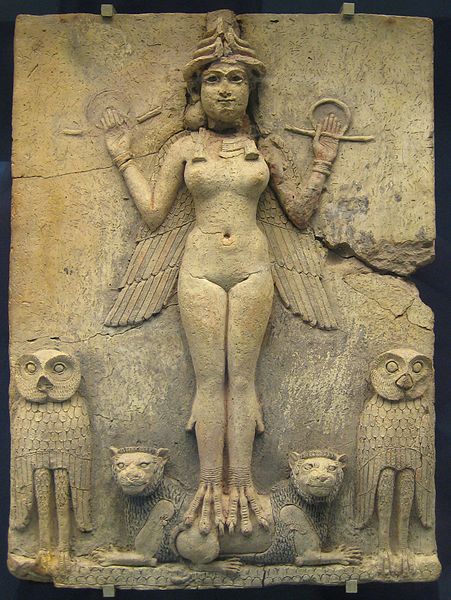
Ishtar, Queen of Night: Old Babylonian period baked clay relief panel; image by BabelStone, 24 June 2010 (British Museum)
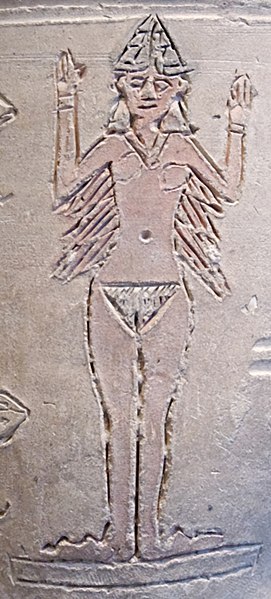
Representation of the goddess Ishtar, Queen of Night (Inana/Inanna), winged and wearing a version of the horned cap of divinity: detail of ancient Mesopotamian so-called "Ishtar Vase" (vase d'Ishtar), terracotta with cut, moulded, and painted decoration, from Larsa, early 2nd millennium BC.; image by Jastrow, 2009 (Department of Near Eastern Antiquities, Musée du Louvre, Paris)

Ishtar, Queen of Night, holding her weapon: terracotta relief, early 2nd millennium BC. From Eshnunna; image by Marie-Lan Nguyen, 14 January 2009 (Department of Near Eastern Antiquities, Musée du Louvre, Paris)
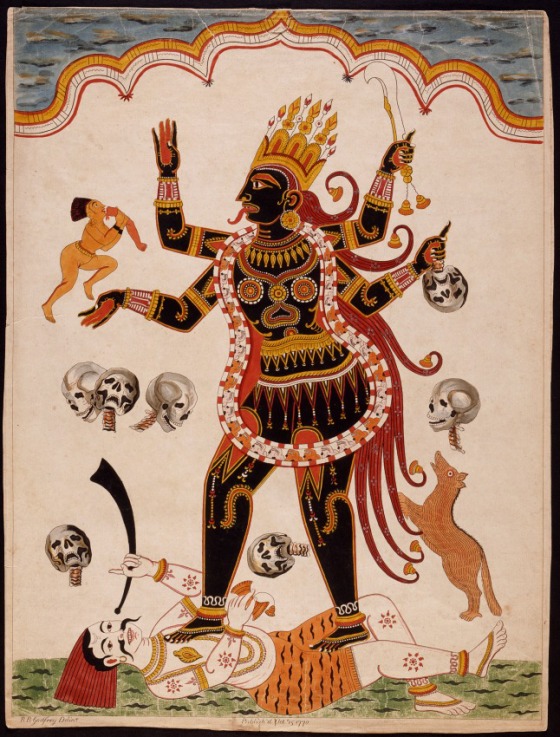
Triumph of Kali Devi (Hindu Goddess Kali): Richard B. Godfrey, 1770 (South and Southeast Asian Art Department, Los Angeles County Museum of Art)
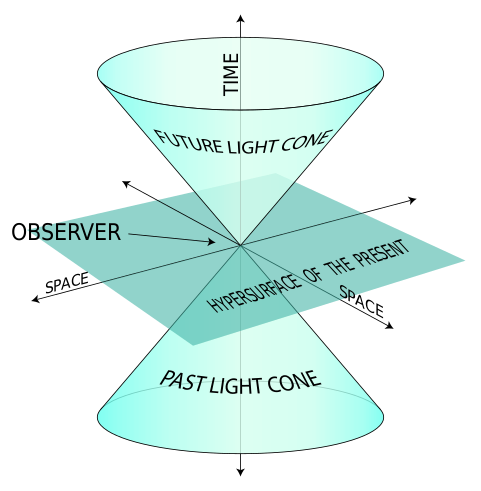
Visualization of the past light cone, the present and the future light cone, in 2D space: image by K. Aainsqatsi, 2007

Hindu Time Goddess Kali with inscription (invitation for kalipuja -- festival), near Kolkata (to left, election mural of the Indian Communist Party of India): photo by Christine Kundu, 2005

Melted clock, Cass Technical High School: photo by Yves Marchand and Romain Meffre, from The Ruins of Detroit (Steidl), 2010
Horloge republicaine: metric clock dial of the French Revolution, from The Republican Calendar, late 18th c.: image by Kama, 2005

Clock of the Berenguela tower, Santiago de Compostela Cathedral, Galicia, Spain: photo by Luis Miguel Bugallo Sánchez, 1 April 2006

Bristol bus station clocks: photo by Rob Brewer, 2005

Shepherd Gate Clock, Royal Observatory, Greenwich, UK: photo by Alvesgaspar, 2007

The Elephant Clock: Leaf from The Book of Knowledge of Ingenious Mechanical Devices by al-Jazari: Abu'l Izz Ismacil al-Jazari (1136-1206 AD), author; Farkh ibn cAbd al-Latif, copyist; detached folio from an illustrated manuscript, Mamluk, Syrian (?), 1315 AD (Cora Timken Burnett Collection of Persian Miniatures and Other Persian Art Objects, Metropolitan Museum of Art, New York)
Su Song's water-powered astronomical clock (scaled model). The original clock tower designed by Su Song (1020-1021 AD) was three storeys tall (c. 35 feet), with an armillary sphere on the roof, and a celestial globe on the third storey. From an exhibition at Chabot Space & Science Center in Oakland, California: photo by Kowloonese, 12 July 2004

Chinese mechanical and horological engineering from the Song Dynasty; this diagram provides an overall general view of the inner workings and armillary sphere of Su Song's clocktower built in Kaifeng. The drawn illustration comes from Su Song's book Xin Yi Xiang Fa Yao published in the year 1092. On the right is the upper reservoir tank with the 'constant-level tank' beneath it. In the center foreground is the 'earth horizon' box in which the celestial globe was mounted. Below that are the time keeping shaft and wheels supported by a mortar-shaped end-bearing. Behind this is the main driving wheel with its spokes and scoops. Above that are the left and right upper locks with an upper balancing lever and upper link: Joseph Needham, in Science and Civilization in China: Volume 4, Part 2, Mechanical Engineering; image by PericlesofAthens, 14 August 2007

The "Nuremberg Egg", one of the earliest pocket watches: attributed to Peter Henlein, c. 1510; image by Pirkheimer, 8 May 2011 (Germanisches Nationalmuseum, Nuremberg)


Early cuckoo clock, Black Forest, 1760-1780: (photo by Deutsches Uhrenmuseum, Furtwangen)
One night as he sat at his table head on hands he saw himself rise and go. One night or day. For when his own light went out he was not left in the dark. Light of a kind came then from the one high window. Under it still the stool on which till he could or would no more he used to mount to see the sky. Why he did not crane out to see what lay beneath was perhaps because the window was not made to open or because he could or would not open it. Perhaps he knew only too well what lay beneath and did not wish to see it again. So he would simply stand there high above the earth and see through the clouded pane the cloudless sky. Its faint unchanging light unlike any light he could remember from the days and nights when day followed hard on night and night on day. This outer light then when his own went out became his only light till it in its turn went out and left him in the dark. Till it in its turn went out.
Samuel Beckett: from Stirrings Still, 1988


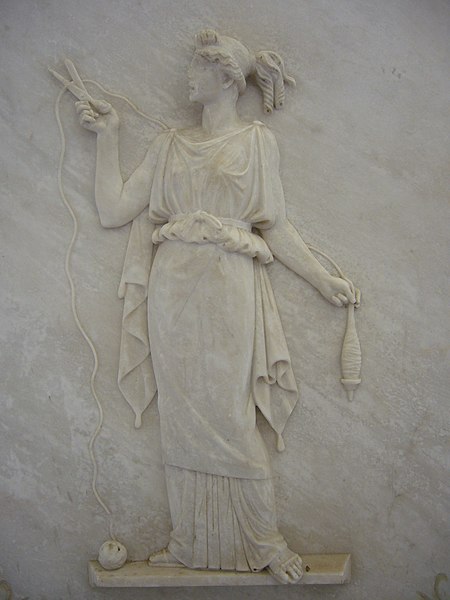



No comments:
Post a Comment